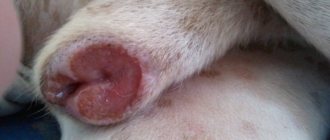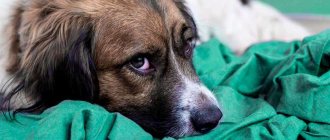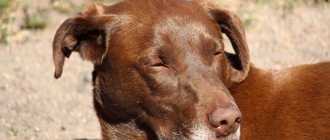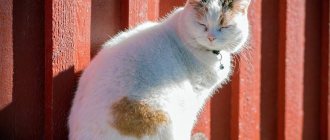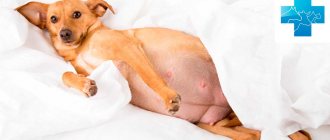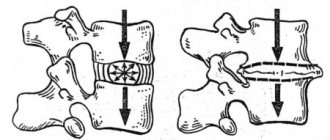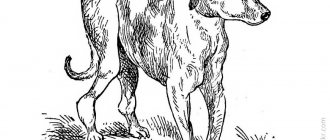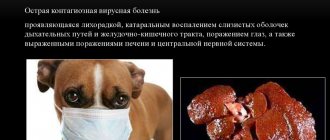Characteristic manifestations occur: wounds form on the skin, the fur looks disheveled and unkempt.
The disease caused by the canine lice eater is called trichodectosis or mallophagosis. You can fight it in different ways. The owner decides which one is suitable after consulting a doctor.
Lice eaters in dogs and what they look like
Lice-eating lice are classified as lice that parasitize four-legged pets. The length of these yellowish-gray insects is no more than 2 mm even after maturing to a sexually mature individual. When viewed with the naked eye, they can easily be confused with regular dandruff.
Unlike other lice, lice are wingless. They cling to their host with hook-shaped jaws and strong claws. These parasites feed on keratinocytes, that is, hair and skin cells.
Hair lice are striking in their fertility. One individual can lay up to 100 eggs, which go through the entire development cycle in just 28 days. Without timely treatment, the colony of parasites grows rapidly, causing severe itching in the infected animal.
Appearance of the parasite (photo)
The lice beetle belongs to the order of lice and lice. This is a very small insect with a flat body. The length of the parasite is about 1 mm, the color ranges from grayish, transparent to yellow. On the skin of an animal, the lice eater looks more like particles of dandruff than a parasite.
The body of the lice eater looks very much like a louse or a flea, but there is one distinctive feature - the shape of the head. In the lice eater it is wide, wider than the body. The parasite feeds not only on blood and lymph, but also on particles of skin and fur.
The lice beetle reproduces very quickly. The female lays about 70 eggs during her life cycle, which are attached to the animal’s fur using a sticky liquid. After about a week, larvae emerge from the eggs, which only a month later become adults, having previously gone through three stages of molting.
Difference from other ectoparasites
The symptoms and methods of treating scabies mites, lice mites and fleas in dogs are similar, but the differences between these ectoparasites are clearly visible in the photo. The size of the lice beetle is much larger than that of a tick, and its head is wider than a flea.
Another difference is the way they eat. Hair lice live strictly on the surface of the skin, and their mouthparts are not adapted for sucking blood. Despite this, they happily feast on the lymph that appears from the wounds as a result of scratching.
Due to the lack of wings and poor jumping ability, lice eaters do not strive to leave the body of their owner. This distinguishes them from fleas, which love to savor different types of blood and often move on to new victims.
Prevention of the disease
Prevention of lice eaters is:
- Pet hygiene means regular washing and combing of the coat.
- Minimizing the dog's contact with stray animals.
- Timely treatment of your pet against parasites, using any of the means of protection - drops, collars or sprays.
No product gives a 100% guarantee and will protect your pet from all misfortunes. For more complete protection and peace of mind for the owner, products can be combined using different active ingredients in different forms - for example, a collar and drops or a collar and spray.
Danger of infection and complications
Any pet can become infected with trichodectosis, so the patient must be isolated during treatment. Despite this, direct transmission of parasites occurs only some time after infection. Until this moment, small pests are in no hurry to change their owner.
It is also worth noting that a dog's lice eater is different from a cat's. Each of these ectoparasites gravitates toward a specific type of animal and tends to leave the body of the “wrong” host. If there is a cat living in the house, then the greatest danger to it is not the lice eater, but the diseases it carries.
Thanks to their “gnawing” mouthparts, lice lice remain undetected for a long time. Their bites are not as painful as those of fleas, so the symptoms of infection at the initial stage are almost invisible. For this reason, trichodectosis is often complicated and leads to:
- secondary infection with fungi and bacteria that freely penetrate combed wounds;
- allergies provoked by waste products of pests;
- exacerbation of chronic pathologies arising from a weakened immune system;
- exhaustion and anemia;
- helminthic infestations that develop when eggs and larvae of helminths are transmitted through lice beetle bites.
The last complication is observed more often than others. The thing is that when biting the itchy areas, the helminths go straight into the mouth.
Diagnostic measures
Diagnosis and treatment of ringworm are carried out by a dermatologist. The doctor examines the patient and identifies typical manifestations of microsporia. Examination of skin scrapings under a microscope reveals fungal mycelium and changes in the structure of hair and skin. Differential diagnosis makes it possible to exclude trichophytosis from the patient’s history, which has similar manifestations upon microscopy of the patient’s biomaterials.
Microflora culture appears to be a more informative diagnostic technique. Laboratory staff determine the type and genus of fungi. Based on the laboratory report, the dermatologist selects drugs that will cure the patient.
Luminescent examination makes it possible to identify pathological lesions on the skin of the patient and those living with him. This diagnostic method is based on the green glow of the fungal mycelium under the influence of a gas-discharge light source.
Routes and sources of infection
The main mechanism of transmission of the pathogen is contact. Lice eaters appear in puppies from an infected mother, since in the first 2 months the babies are under strict quarantine. In adulthood, infection occurs through sexual contact, licking, sniffing, fighting and playing together.
In addition to direct contact with a sick animal, an indirect transmission mechanism is also possible, that is, through hygiene items, toys, dishes and outdoor shoes.
Infection through rodent carriers is even less common. Cats that hunt mice and rats are usually infected in this way.
The risk group includes residents of dog shelters. Due to the crowded conditions, only one infected person is enough for a mass epidemic. Also, the likelihood of infection increases a weak immune system due to
:
- high level of humidity, increasing the pathology of the respiratory system;
- poor diet;
- immunodeficiency;
- too young or old;
- neglect of hygiene.
Trichodectosis is characterized by seasonality. The greatest activity of parasites is observed in autumn and winter.
Preventive measures
Prevention of ringworm is based on regular medical examinations of children attending preschool educational institutions. Parents should talk to their children about the inadmissibility of contact with stray animals. An important preventive measure is compliance with personal hygiene rules by patients of all age groups.
When purchasing pets, you must visit a veterinarian. The doctor will examine the cat or dog and give recommendations on how to eliminate any health problems with the pet. Following your veterinarian's advice will help prevent microscopic outbreaks within your family.
Main symptoms
Despite the mild symptoms and small size of the pathogen, an attentive owner can easily detect it. The main changes concern the behavior and appearance of the dog. These include:
- loss of activity, poor appetite and irritability;
- intense itching, affecting the quality and duration of sleep;
- the appearance of dandruff and deterioration in the quality of wool (fragility, the appearance of tangles) as a result of active exfoliation of the epidermis;
- focal hair loss at the base of the tail, on the inner thighs, head and ears, accompanied by inflammation and redness of bald spots.
If you notice these symptoms, be sure to do a small test. Point the switched-on lamp at your pet and warm its skin for 10 minutes. Pooh-eaters love high temperatures, so they will definitely get closer to a heat source. At this point they can be seen under a magnifying glass.
Once you are sure you have trichodectosis, immediately make an appointment with your doctor. All insecticidal preparations are very toxic, so their dosages and duration of administration are selected individually.
How to get rid of lice in dogs
After taking a scraping, the veterinarian determines the severity of the disease and explains how to treat lice in dogs. At the initial stage, they limit themselves to insecticides, and at an advanced stage, they add antibiotics and antimycotics that fight secondary infection.
Treatment with insecticides is carried out twice. At the first stage, all adult individuals are killed, and at the second, the larvae hatched from the eggs.
Shampoos
Shampoo is the most gentle type of insecticidal preparations, but this is also its disadvantage. It washes off too quickly, so it is effective only for mild forms of trichodectosis. In addition to destroying the pathogen, it improves the condition of the coat and relieves itching.
Sprays
Spray the spray directly onto the coat, avoiding licking the product until completely absorbed. Otherwise, the pet may be poisoned. Direct inhalation should also be avoided. To do this, it is recommended to use a protective mask during processing.
Drops
The most common form of anti-lice preparations for dogs is drops. They are made from natural oils or chemicals that kill parasites.
Another feature of this product is its long-lasting effect. When applied to the skin, it protects the animal from pests for 2 months.
Ointments
For frequent use in case of extensive damage, ointments are prescribed. They are applied twice a day after shampooing. Such drugs are characterized by the least toxicity and rarely cause allergies.
Pills
The duration of action of the tablet form is up to 3 months. When the tablet is swallowed, the active substances enter directly into the blood, so the parasites die soon after the bite.
Collars
Insecticidal collars are effective in preventing trichodectosis, flea and tick infestations. To repel parasites, they are impregnated with special chemicals, which often causes allergies. In case of hair loss and redness of the skin at the contact site, it is recommended to replace the collar with a safer analogue.
Folk remedies
Folk remedies for hairworms for dogs include various herbal decoctions based on string, chamomile and celandine. A sick pet is bathed in them until the symptoms disappear. This method of treatment is suitable for puppies and animals with sensitive skin who are not allergic to the listed plants.
Symptoms
Once on the skin, lice eaters quickly begin to “get comfortable” - they actively lay eggs and leave their metabolic products on the fur. Signs of the presence of parasites are easy to identify:
- The dog is constantly itching, whining, and showing restlessness.
- characteristic bald patches appear in the area of the neck, hips, tail and ears, and the skin in problem areas becomes inflamed and red.
- scratches turn into wounds, and those, in turn, turn into scabs and poorly healing crusts.
- the fur becomes dull, unkempt, and rolls into tangles.
- the animal suffers from insomnia, loses appetite and is constantly thirsty.
Delayed treatment or its absence can lead to various complications: dermatitis, allergies, fungal infections, etc. The most dangerous thing that awaits an animal if the disease progresses unfavorably is the development of leptospirosis. In such cases, the likelihood of death is high, especially if we are talking about puppies or young dogs.
Dosage and use of medications
The treatment course takes at least a month, so it is very important to follow all the veterinarian’s recommendations. If you neglect treatment until all parasites are destroyed or exceed safe dosages, you can harm your pet.
When using medications, be sure to adhere to the following rules:
- Do not rush to wash off shampoo applied to wet fur. The effect appears only after a few minutes, so rub it thoroughly into the skin and leave it there for a while. Pay special attention to heavily soiled areas with tangles. They require more detergent to clean.
- After rinsing off the shampoo, dry the coat thoroughly and comb it through with a comb. This will help get rid of a significant part of the pests.
- When spraying sprays, try to avoid getting them into the eyes and other mucous membranes.
- Apply drops strictly to the withers or along the line of the spinal column. In these areas, the animal will not be able to lick them, but for safety it is better to wear a protective collar.
The treatment is carried out in several stages with a weekly or two-week interval. If the symptoms disappear almost immediately, do not rush to rejoice and cancel the prescribed medications until you are re-examined at the veterinary clinic.
Handling your pet's personal belongings and disinfecting your home
Leaf bugs that have left the fur can hide in any household items, so the fight against them cannot be done without thorough disinfection. All horizontal surfaces must be treated with insecticides or herbal infusions.
Particular attention should be paid to dog toys and bedding. They should be washed in hot water with insecticidal shampoo or treated with steam, and then thoroughly frozen on the balcony. In summer, the required temperature can be found in the freezer. To destroy heat-loving pests, it is enough to keep washed items there overnight.
